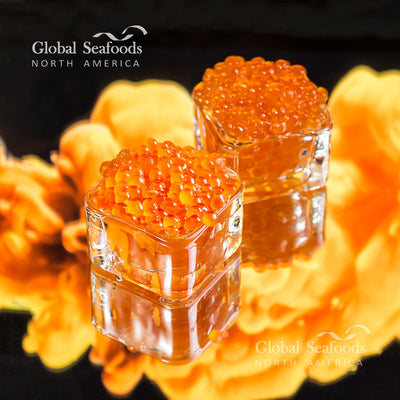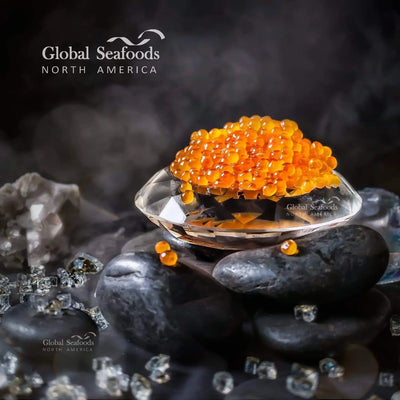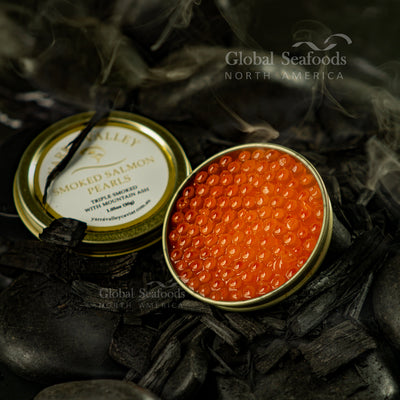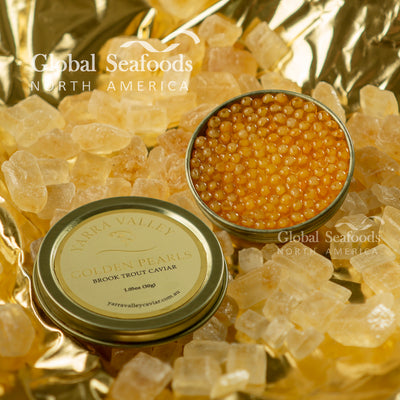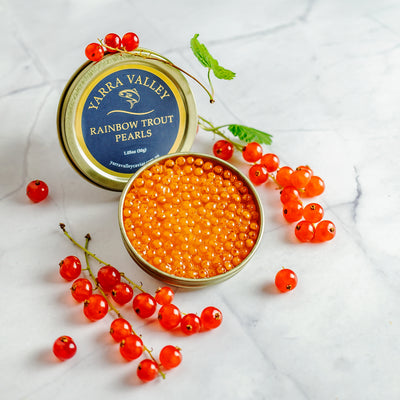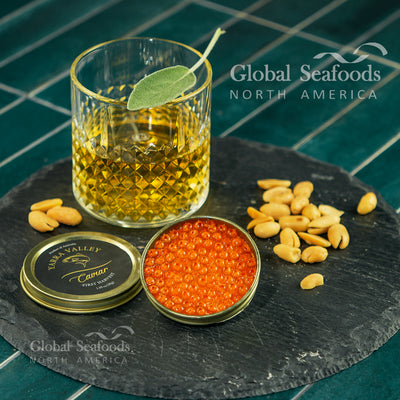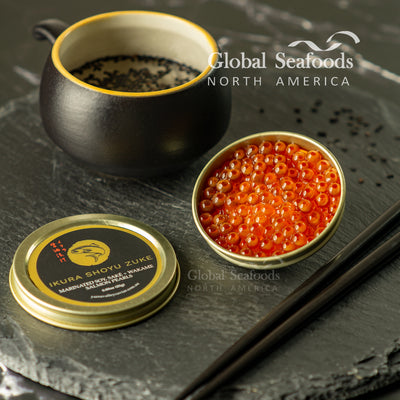How to Properly Store Ikura (Salmon Roe) to Keep It Fresh

How to Properly Store Ikura to Keep It Fresh
Ikura, or salmon roe, is a prized delicacy in many cultures, celebrated for its vibrant color, delicate texture, and rich, briny flavor. Whether you're purchasing it fresh or in bulk, knowing how to store ikura properly is essential to maintaining its freshness, taste, and nutritional value. In this comprehensive guide, we'll dive deep into the best storage practices for ikura, including refrigeration, freezing, and handling, to ensure you enjoy this seafood delicacy at its peak.
Why Proper Storage of Ikura Matters
Proper storage of ikura is crucial to preserving its quality, taste, and safety. Salmon roe is highly perishable due to its high moisture and oil content, making it vulnerable to bacterial growth, spoilage, and loss of flavor. Storing ikura correctly not only extends its shelf life but also ensures that you can enjoy its vibrant taste and nutritional benefits whenever you like.
Renowned chefs and seafood experts, like Chef Nobu Matsuhisa, emphasize the importance of careful handling of fresh seafood to maintain its delicate flavors: "When it comes to preserving the freshness of premium ingredients, temperature control and timely consumption are key." These principles apply to ikura as well, which can lose its appeal quickly if not handled properly.
Best Methods for Storing Ikura
1. Refrigeration: Keeping Ikura Fresh for Short-Term Use
Refrigeration is the most common and recommended method for short-term ikura storage. If you plan to consume ikura within a week, refrigeration is ideal. Here are the key steps:
- Optimal Temperature: Store ikura at a temperature between 32°F to 34°F (0°C to 1°C). The lower end of this range ensures that the ikura stays fresh without freezing.
- Airtight Containers: Place the ikura in an airtight container to prevent exposure to air, which can lead to oxidation and spoilage. Airtight containers also help to contain the strong aroma of the roe.
- Salmon Roe in Brine: If the ikura comes in brine, leave it submerged. The salt content of the brine acts as a natural preservative, slowing bacterial growth and maintaining the roe's texture.
Tip: Always place the container of ikura on the bottom shelf of the refrigerator, where it's coldest.
For more information on purchasing high-quality ikura, visit the Red Caviar Collection at Global Seafoods.
2. Freezing Ikura: Long-Term Storage Solutions
For those who purchase ikura in bulk, freezing is the best option for long-term storage. When frozen correctly, ikura can last up to six months without compromising its quality. However, improper freezing can lead to a loss of texture and flavor. Follow these expert tips:
- Freezing Temperature: Freeze ikura at -4°F (-20°C) or lower to halt bacterial growth and preserve its texture.
- Portioning: Freeze ikura in small portions using airtight freezer-safe containers or vacuum-sealed bags. This allows you to thaw only what you need, minimizing waste.
- Defrosting: Always defrost ikura slowly by transferring it to the refrigerator 24 hours before use. Avoid thawing at room temperature, as rapid defrosting can cause the roe to lose its texture and flavor.
It's worth noting that some types of caviar are better suited for freezing than others. Chum Salmon Caviar and Coho Salmon Caviar are known for retaining their quality even after freezing, making them ideal options for those looking to store roe for longer periods.
How to Handle Ikura Safely
3. Avoiding Cross-Contamination
Ikura is often consumed raw, which makes food safety a top priority. Here’s how to handle it properly:
- Clean Utensils and Surfaces: Always use clean, dry utensils and surfaces when handling ikura. Contaminated surfaces can introduce bacteria that may accelerate spoilage.
- Temperature Control: Keep ikura refrigerated or frozen until you're ready to serve it. Even brief exposure to room temperature can increase the risk of bacterial growth.
- Check Expiration Dates: Always check the "best by" dates on store-bought ikura to ensure you're consuming it within its peak freshness window.
4. Serving Ikura: Tips for Maintaining Freshness at the Table
When serving ikura, freshness is key to enjoying its full flavor. Here are some tips to enhance your ikura experience:
- Serve Cold: Place the ikura on a bed of crushed ice to keep it chilled during serving. This not only enhances the texture but also preserves its delicate flavor.
- Pairing with Dishes: Ikura pairs well with sushi, rice bowls, and blinis. For a gourmet experience, try serving ikura with Golden Pearls Brook Trout Caviar or Rainbow Trout Pearls for a luxurious caviar sampler platter.
For more caviar options to pair with ikura, check out Global Seafoods' Red Caviar collection.
Signs of Spoiled Ikura
Ikura is highly perishable, so it’s crucial to recognize signs of spoilage to avoid foodborne illness:
- Off Smell: Fresh ikura should have a clean, briny aroma. If the roe smells sour, fishy, or off-putting, it's likely spoiled.
- Change in Texture: Spoiled ikura often becomes mushy or slimy. Fresh ikura should be firm, with each egg maintaining its shape.
- Color Changes: While ikura typically has a bright orange or red hue, any browning or dullness may indicate spoilage.
If you notice any of these signs, it’s best to discard the roe to avoid the risk of food poisoning.
The Importance of Quality in Ikura
The quality of ikura you purchase plays a significant role in how well it stores. Premium-grade ikura sourced from sustainable fisheries is not only tastier but also more resilient to freezing and refrigeration.
At Global Seafoods, we pride ourselves on offering the highest quality ikura and caviar products. Our ikura is sourced from the finest salmon and carefully processed to ensure freshness and flavor. When you buy from trusted sources, you’re investing in quality that lasts.
How to Maximize the Shelf Life of Ikura
To get the most out of your ikura, follow these storage best practices:
- Purchase Fresh: Whenever possible, buy ikura that’s freshly packed and has a clear "best by" date.
- Minimize Air Exposure: Always use airtight containers for both refrigerated and frozen ikura to prevent exposure to air, which can cause oxidation.
- Store Properly After Opening: Once opened, ikura should be consumed within 2-3 days when stored in the refrigerator.
For the finest selection of premium caviar, including Pink Salmon Caviar and Bloody Shiraz Infused Caviar, visit our online store.
FAQs:
-
Can you freeze ikura?
Yes, freezing is an excellent way to store ikura long-term. Just be sure to freeze it in airtight containers or vacuum-sealed bags. -
How long does ikura last in the fridge?
Fresh ikura can last 5-7 days in the fridge if stored properly in an airtight container at 32°F to 34°F (0°C to 1°C). -
What is the best way to thaw frozen ikura?
The best way to thaw ikura is to transfer it from the freezer to the refrigerator 24 hours before use. Avoid thawing at room temperature. -
Can I eat ikura past its expiration date?
It’s not recommended to eat ikura past its expiration date as it can spoil easily, leading to potential foodborne illness. -
How do you know if ikura has gone bad?
Spoiled ikura will often have an off smell, mushy texture, or discolored eggs. If you notice these signs, it’s best to discard the roe. -
What is the nutritional value of ikura?
Ikura is rich in omega-3 fatty acids, high-quality protein, and vitamins such as B12 and D, making it a nutritious addition to your diet.
Conclusion
Proper storage and handling of ikura are vital to preserving its freshness, taste, and nutritional value. By following these expert tips, you can ensure that your ikura remains as delicious as the day you bought it, whether you’re storing it for a few days or several months. Whether refrigerated or frozen, ikura can be enjoyed at its best when stored with care.
For more insights on seafood and ikura storage tips, subscribe to our YouTube Channel or explore our Red Caviar Collection to find the best salmon roe and caviar products online.
Also in News

Columbia River Steelhead | Life Cycle, Conservation & Facts
Columbia River steelhead are one of the most resilient salmonid species, embarking on an incredible migration from freshwater to the ocean and back. Learn about their spawning habits, juvenile development, oceanic journey, and conservation efforts. Discover why steelhead are a prized fish for both anglers and seafood lovers.

Mastering Dover Sole: Cooking & Serving Guide for a Gourmet Experience
Dover Sole is a culinary delight known for its mild flavor and tender texture. Whether you're pan-frying for a crispy finish, baking for a healthy meal, or grilling for a smoky touch, this guide provides expert tips on preparing, cooking, and serving Dover Sole. Elevate your seafood dishes and enjoy gourmet flavors at home.

Cocktail Caviar Pairings: Best Drinks to Complement Exquisite Caviar
Pairing caviar with the right cocktail enhances both flavors, turning any occasion into an indulgent experience. Learn expert tips on pairing champagne, martinis, Moscow mules, and more with the perfect caviar selection.

